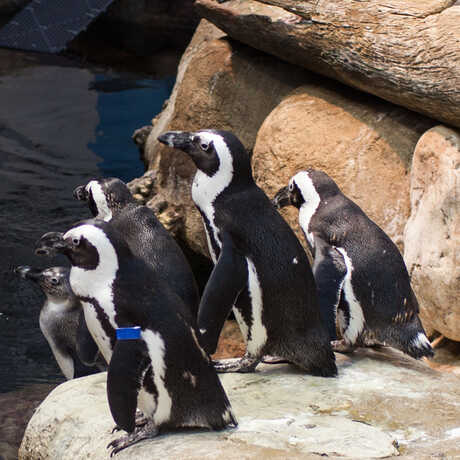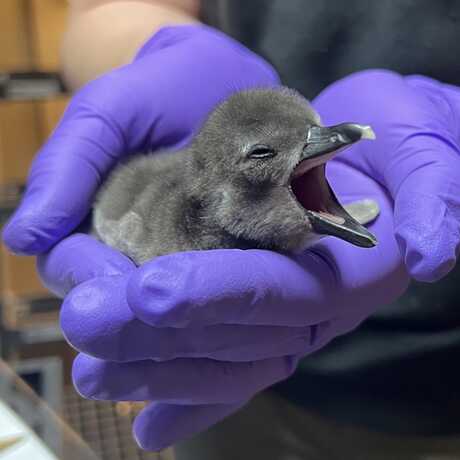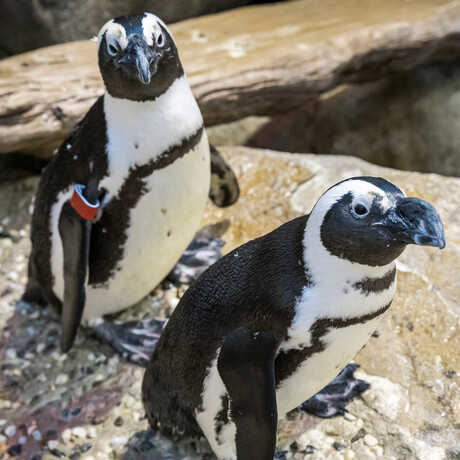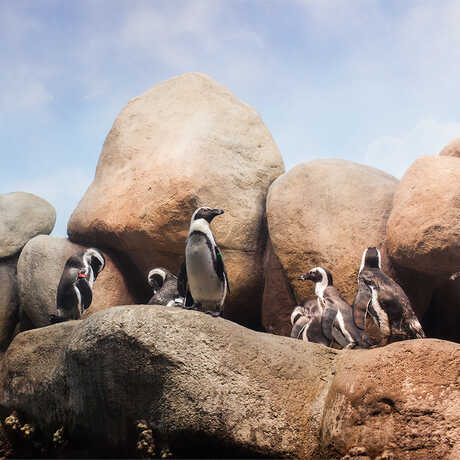It may be the waddling. Or their sophisticated tuxedoes. Or perhaps it's the fact that they are highly social and form long-term bonds. Whatever the reason, penguins have a knack for capturing our hearts. The Academy's colony of African penguins (Spheniscus demersus) does just that, while helping educate thousands of visitors a day about their fascinating biology and plight in the wild.
Each bird in the exhibit wears a colorful wing band, which helps Academy staff and visitors quickly distinguish one bird from another. Males are banded on the right, females on the left. Couples, which typically have the same colored wing bands, can often be seen grooming one another near the nest box they share.
Scuffles over territory are common, and there is a definite social hierarchy within the colony. Through pointing (when a penguin lowers its body to the ground and point its beak at another penguin), biting, fighting and braying, dominant birds (usually older) establish a pecking order, and will literally put a juvenile bird in its place by chasing or herding if they feel challenged. African penguins feed on anchovies and sardines in the wild, and we simulate their diet at the Academy by offering sustainably caught herring and capelin, supplemented by vitamins, including B-1, E, and a multi-vitamin. At every feeding a volunteer records what each bird eats, gathering data which helps biologists monitor the well-being of each individual.
The Academy exhibit closely mimics the penguins' natural environment through both its physical variability and changing climatic conditions. The physical features of the exhibit—water, rocky shore, cozy burrows—encourage the full range of penguin behaviors, and through sophisticated use of light and temperature controls, Academy penguins experience sunrise, sunset, and everything in between. Water and air temperatures in the exhibit also change to mimic natural seasonal cycles.




